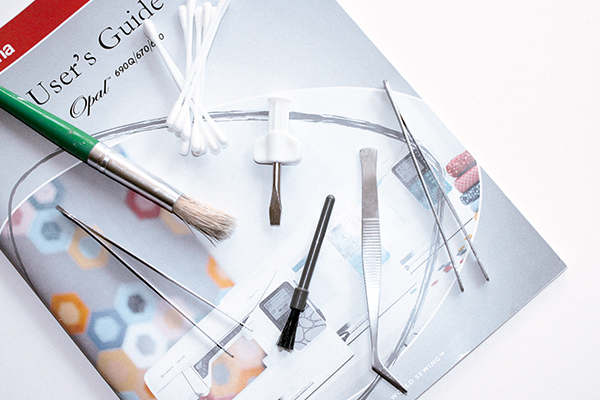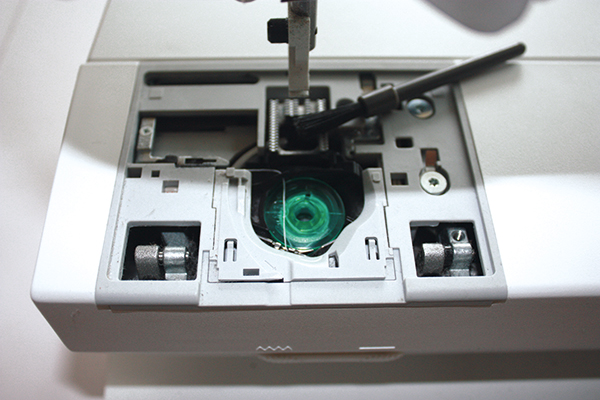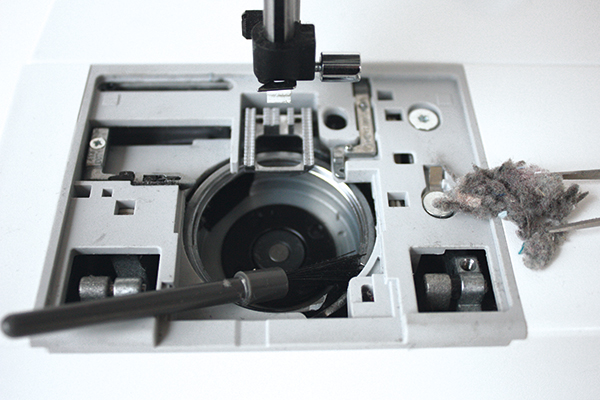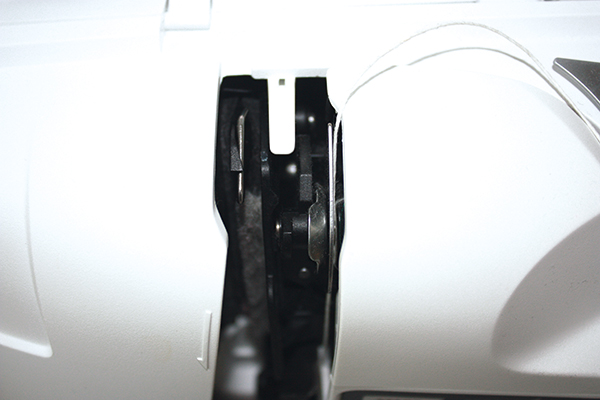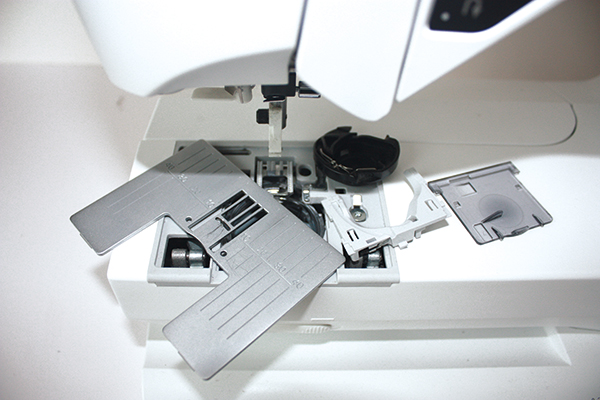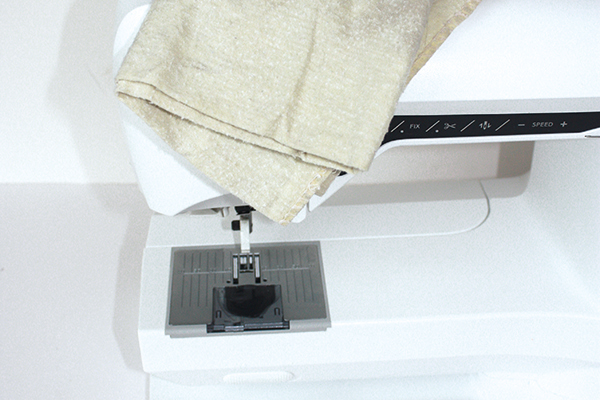They're our most trusty and valued piece of kit, and as we sew more and more with our chosen sewing machine, we get to know it intimately! From it's best tricks to it's not-so-happy quirks, each machine is different, but they all need regular maintenance for us to get the best results from them. So today we're looking at how to take care of your machine with a regular DIY service.
Let's face it, buying a sewing machine is an investment, so if you want it to continue to stitch as smoothly as it did when you first brought it home, keeping it clean is a really easy thing you can do to help your machine run at its best....
While we recommend taking your machine to a professional to fix any issues and give it a full service, there are things you can do at home to keep your trusty machine running like a dream, from covering it when you're not stitching, to cleaning it often to keep it free of lint. Follow our maintenance tips and step-by-step cleaning guide below to keep your machine whirring away nicely. A happy machine means happy stitching, after all...
7 things we can all do to take care of our sewing machines
Cleaning and maintaining your sewing machine is often a task many stitchers overlook – until, that is, it stops working properly and you wish you had done something earlier. The answer to this is, of course, to clean it often and get it serviced regularly. Follow our simple guide on how to look after your precious machine and keep it stitching perfectly.
1. Keep it covered
The simplest thing you can do for your machine is to keep it covered when you’re not using it. This prevents dust, lint, dirt and pet hair from getting into the tiny workings of your machine. Most machines come with a cover, or you can make your own from your favourite fabric.
2. Keep it clean
Ideally, you should clean your machine after every few sewing projects – especially if you have been sewing with fluffy fabrics. The main problem is lint – the short, fine fibres that come off fabric whilst you are working with it. This attracts dust and gets stuck in your machine so it won’t work as efficiently and causes real long-term damage, so clean it regularly.
3. Oil your machine (if it needs it)
Most machine manuals will come with very detailed instructions on how to oil your machine. Always use approved sewing machine oil and nothing else. Some machines, particularly the newer ones, are self-lubricating and do not need to be oiled at all.
4. Change your needle
A bent or blunted needle can result in skipped stitches, broken or looped threads, pulls in your fabric or damage to your machine. Change your needle after about every eight hours of sewing and always use one to suit your fabric type.
5. Winding the bobbin
Always use the bobbin your manufacturers recommend for your machine. It’s best not to wind a new thread over an existing one as this creates extra tails that can jam your machine.
If you have a low bobbin sensor then this won’t work if you have more than one thread colour on your bobbin. Also, it’s best not to use pre-wound bobbins unless recommended by your sewing machine manufacturer.
6. When to get it serviced
You should have your machine serviced once a year by a recommended sewing machine technician. They will check and adjust the tension and timing as well as cleaning areas of the machine that you can't reach and replace anything if necessary. This should keep your machine running smoothly; if you have any other problems with it, get these checked too. Your machine (and sewing) will thank you for it!
7. Troubleshooting
Most sewing machine manuals will give you troubleshooting tips, but if your machine isn’t operating properly try these three things before you take it to a technician:
- Take the top thread out and remove the bobbin. Now re-thread the machine.
- Replace the needle with a new one, making sure it’s the correct type for your fabric and thread and that it’s screwed in tightly.
- Clean your machine following our guide, below.
If none of these work, then take your machine to a repair shop – don’t try to fix it yourself or suffer on in silence, letting it slow down your latest sewing project.
Read on to find out how to clean your machine…
If you're in the market for a new sewing machine, read our complete guide to the best sewing machines.

